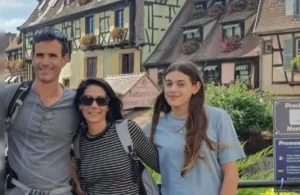Punjab Chief Minister Amarinder Singh Tuesday downplayed the renovations at Jallianwala Bagh, which have earned the Centre ire of historians, civil society and opposition parties. “I don’t know what has been removed. To me it looks very nice,” Singh told reporters, just hours after Congress leader Rahul Gandhi took to Twitter to condemn the revamp as an “insult to the martyrs of Jallianwala Bagh.” Gandhi said only those who do not know the meaning of martyrdom were capable of committing “such an insult to the martyrs of Jallianwala Bagh. I am the son of a martyr – I will not tolerate the insult of martyrs at any cost.” He added that the Congress was against “this indecent cruelty.”
Several other Congress leaders, including the party’s deputy leader in the Lok Sabha Gaurav Gogoi and Jaiveer Shergill, also tweeted on the Jallianwala Bagh memorial issue. Shergill alleged the Bharatiya Janata Party (BJP)-led central government was trying to “erase the marks of atrocities committed by General Dyer during British rule.”
ALSO READ: Strictness was needed, says Khattar on IAS officer’s ‘break the heads’ comment
Gogoi tweeted that installing “disco lights” and other acts of pomp had reduce the gravity and horror of the Jallianwala Bagh memorial to “base entertainment.”
Singh’s remarks come in the backdrop of a section of Congress leaders in Punjab openly calling for his removal from the Chief Minister’s post for the party’s “survival” in the state. The factionalism has been further amplified due to the central Congress leadership’s decision to appoint Singh’s rival Navjot Sidhu as chief of the party’s state unit.
Prime Minister Narendra Modi on Saturday inaugurated the renovated complex of Jallianwala Bagh memorial, where more than 1,000 peaceful protesters were gunned down by the General Dyer-led British forces 102 years ago.
As part of the renovations, hi-tech galleries have replaced the stark, unadorned passage through which General Dyer had led his men and ordered them to open fire on the thousands of unarmed men and women. The walls of the narrow lane at the historic site involve have now been embossed with sculptures.







